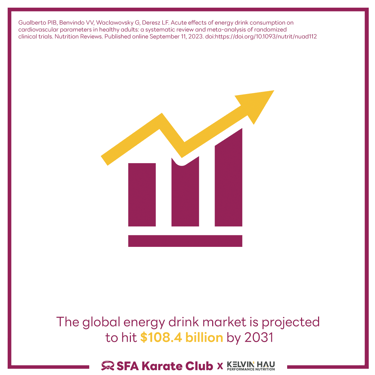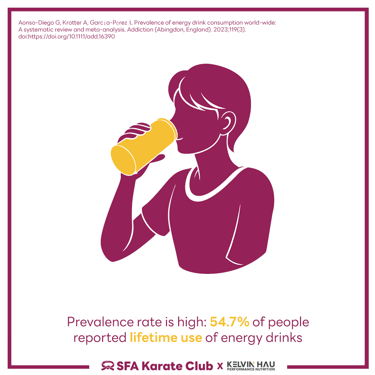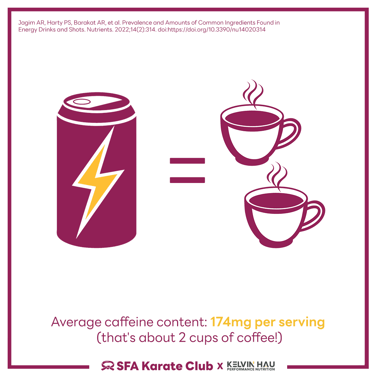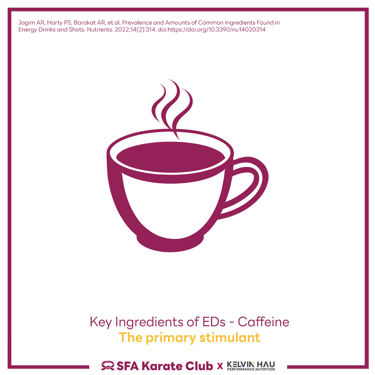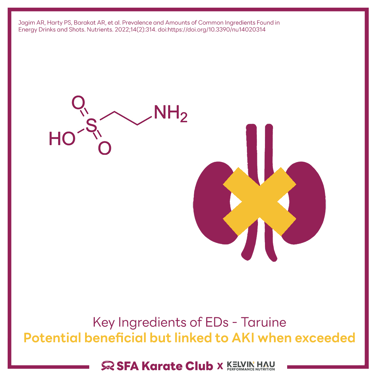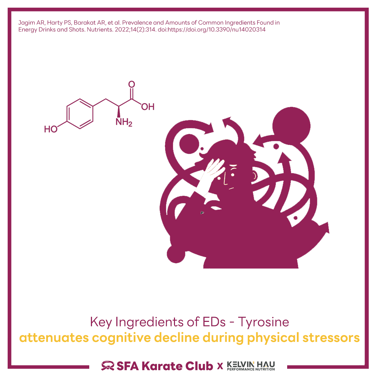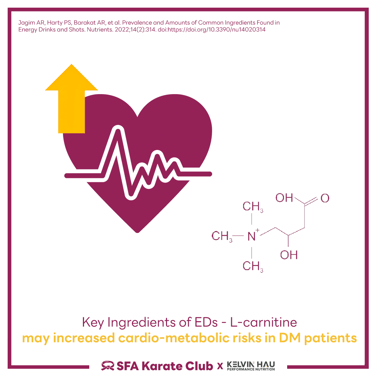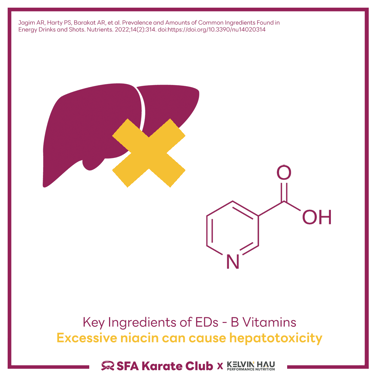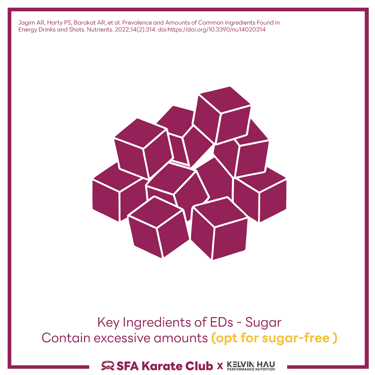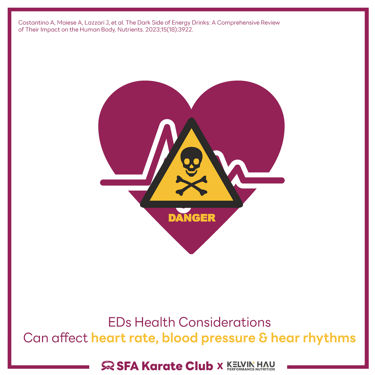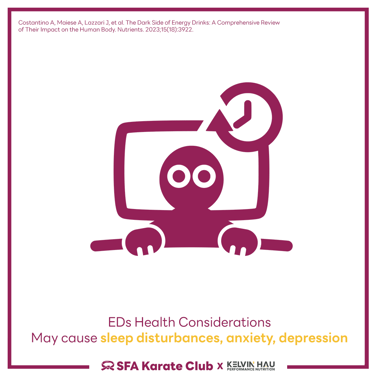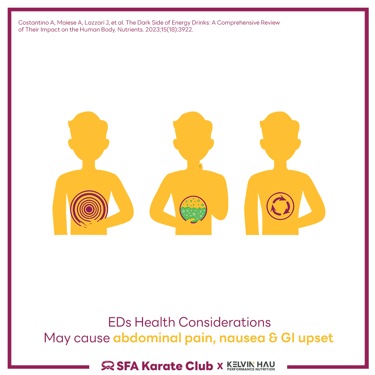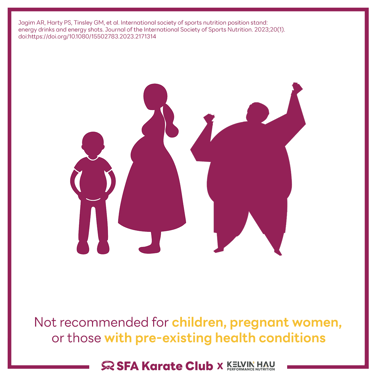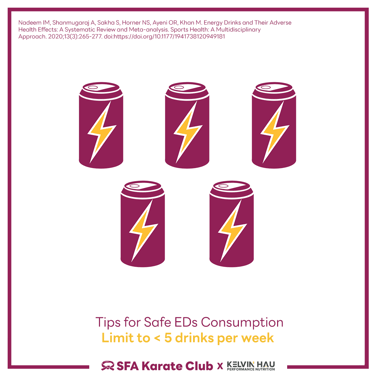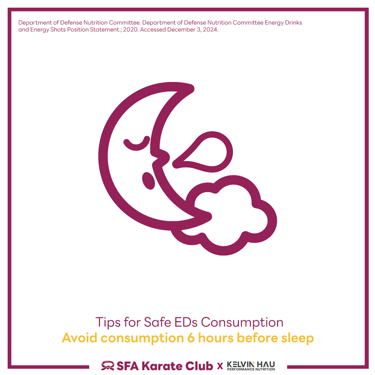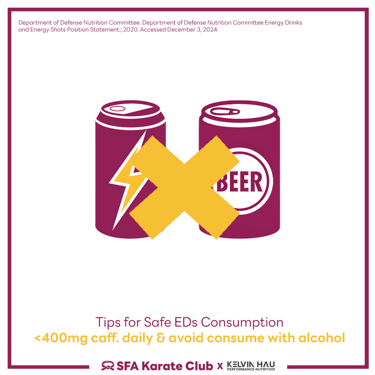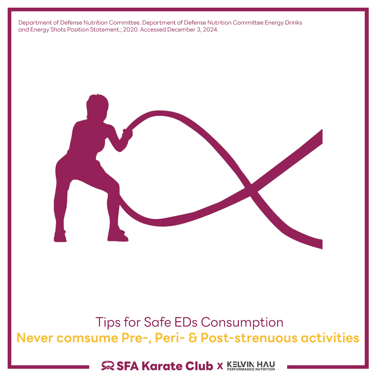[Sports Nutrition Lounge] Energy Drinks/Shots & Athlete's Health
SPORTS NUTRITIONSPORTS NUTRITION LOUNGE
12/6/2024
🚨 Energy Drinks: The Science Behind the Buzz 🧪
Ever wondered what's really in that can of energy drinks (EDs)? As a sports nutritionist, I'm here to break down the facts and science behind these popular beverages.
📊 Did you know?
The global energy drink market is projected to hit $108.4 billion by 2031
54.7% of people reported lifetime use of energy drinks
Average caffeine content: 174mg per serving (that's about 2 cups of coffee!)
🔍 Key Ingredients & What You Need to Know:
Caffeine: The primary stimulant
Taurine: Potential benefits to physical performance but linked to acute kidney injury when consumed excessively
Tyrosine: Can attenuate a decline in cognitive function during physical stressors
L-carnitine: General safety in healthy individuals, related metabolites may associate with increased cardio-metabolic risks in diabetic patients
B Vitamins: Often in amounts exceeding daily needs, excessive niacin can cause hepatotoxicity
Sugar: Many contain excessive amounts (opt for sugar-free if needed)
⚠️ Health Considerations:
Can affect heart rate, blood pressure and increase the risk of dangerous heart rhythms
May cause sleep disturbances, anxiety, depressive symptoms
May cause abdominal pain, nausea, and gastrointestinal upset
Not recommended for children, pregnant women, or those with pre-existing cardiovascular, metabolic, or neurological conditions
Risk increases when mixed with alcohol
💡 Professional Tips for Safe Consumption:
Limit to < 5 drinks per week
Avoid consumption 6 hours before sleep
Avoid co-consumption with alcohol
Stay within 2-6mg/kg BW or <400mg caffeine daily from all sources
Never consume EDs Pre-, peri-, and Post-strenuous activities
🎯 Bottom Line:
While energy drinks may provide short-term benefits, they're not a substitute for proper sleep, nutrition, and hydration. Always prioritize sustainable energy sources through balanced nutrition and adequate rest.
Reference
Gualberto PIB, Benvindo VV, Waclawovsky G, Deresz LF. Acute effects of energy drink consumption on cardiovascular parameters in healthy adults: a systematic review and meta-analysis of randomized clinical trials. Nutrition Reviews. Published online September 11, 2023. doi:https://doi.org/10.1093/nutrit/nuad112
Protano C, Valeriani F, De Giorgi A, et al. Consumption Patterns of Energy Drinks in University Students: a Systematic Review and Meta-analysis. Nutrition. 2022;107:111904. doi:https://doi.org/10.1016/j.nut.2022.111904
Aonso-Diego G, Krotter A, García-Pérez Á. Prevalence of energy drink consumption world-wide: A systematic review and meta-analysis. Addiction (Abingdon, England). 2023;119(3). doi:https://doi.org/10.1111/add.16390
Jagim AR, Harty PS, Tinsley GM, et al. International society of sports nutrition position stand: energy drinks and energy shots. Journal of the International Society of Sports Nutrition. 2023;20(1). doi:https://doi.org/10.1080/15502783.2023.2171314
Jagim AR, Harty PS, Barakat AR, et al. Prevalence and Amounts of Common Ingredients Found in Energy Drinks and Shots. Nutrients. 2022;14(2):314. doi:https://doi.org/10.3390/nu14020314
Costantino A, Maiese A, Lazzari J, et al. The Dark Side of Energy Drinks: A Comprehensive Review of Their Impact on the Human Body. Nutrients. 2023;15(18):3922. doi:https://doi.org/10.3390/nu15183922
Department of Defense Nutrition Committee. Department of Defense Nutrition Committee Energy Drinks and Energy Shots Position Statement.; 2020. Accessed December 3, 2024. https://www.opss.org/sites/default/files/downloadable/DoD%20Nutrition%20Committee%20Energy%20Drinks%20PS_042720_0.pdf
Nadeem IM, Shanmugaraj A, Sakha S, Horner NS, Ayeni OR, Khan M. Energy Drinks and Their Adverse Health Effects: A Systematic Review and Meta-analysis. Sports Health: A Multidisciplinary Approach. 2020;13(3):265-277. doi:https://doi.org/10.1177/1941738120949181
